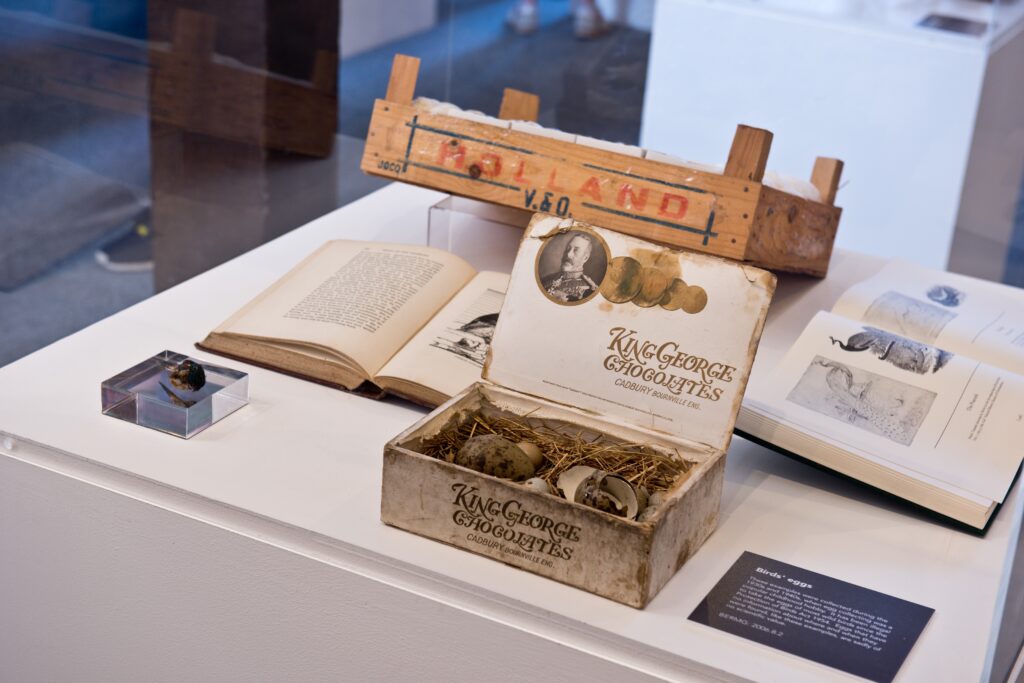These changes were recorded by the Berwickshire Naturalists’ Club, which was founded in 1831 by local resident Dr George Johnston. Beyond the Field draws on their early publications, which are held here at Berwick Museum and Art Gallery. As a forerunner of naturalist societies across Britain, the Club’s records provide vital information about the ecology, history and culture of Northumberland.
The instruments played in the exhibition were also common in the 18th century. These include Northumberland pipes, Half Long (or Border) Pipes, fiddle, hurdy gurdy, tabor, tabor pipe, shawm, Jew’s harp and bone whistles. Sometimes individual instruments can be clearly heard. At other times the sounds of fauna were produced through layering many instruments, or by removing a component such as the reed or bellows from the small pipes.
The insects, birds and mammals represented in Beyond the Field are almost all now considered ‘at risk’ or ‘of concern’. Although the installation conjures a place and time specific to Berwick-upon-Tweed, it invites the audience to consider the ongoing impact of human activity across the natural world.

Beyond the Field
In Beyond the Field, Matt Stokes uses folk instruments to create the sounds produced by fauna present in the landscape of Berwick-upon-Tweed in the mid-1700s. This was during the Agricultural Revolution when the flower-rich meadowlands described by writers surveying the Tweed Valley were being drained and replaced with crops. The shift in farming practices altered local biodiversity, affecting the plants, insects, birds and mammals present in the area.

